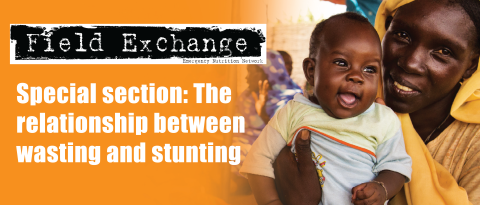Integration of severe acute malnutrition treatment in primary health care provided by community health workers in rural Niger
This is a summary of the following paper: Ogobara Dougnon A, Charle-Cuéllar P, Toure F (2021). Impact of integration of severe acute malnutrition treatment in primary health care provided by community health workers in rural Niger. Nutrients, 13(11). Available at: https://doi.org/10.3390/nu13114067
In Niger, childhood malnutrition remains a public health problem. In the Maradi region, the prevalence of global acute malnutrition (GAM) reached 11.4% with 3.4% severe acute malnutrition (SAM) in the same year. Niger’s community-based management of acute malnutrition (CMAM) policy dictates that SAM be treated by nurses in health facilities. However, the integration of SAM treatment into integrated community case management platforms has the potential to increase coverage through the community-based treatment of uncomplicated SAM cases by community health workers (CHWs). In parallel, there has been increased interest in simplified protocols for SAM treatment including the use of mid-upper arm circumference (MUAC) as a single criterion for treatment admission.
This study aimed to assess the impact of the integrated management of SAM by CHWs on treatment coverage in the Maradi region of Niger, with special attention given to anthropometric criteria for admission to treatment. A non-randomised controlled trial was implemented in two rural communes, Maïreyreye (control) and Guidan Amoumoune (intervention). The control group received outpatient treatment for uncomplicated SAM from health facilities while the intervention group received outpatient treatment from health facilities or CHWs. A total of 2,789 children aged 6–59 months were included in the study.
Results showed that the addition of CHWs as service-providers increased treatment coverage and CHWs maintained a good quality of care. In the intervention area, coverage increased by 3.1% and 77.2% of children were cured, compared to the control area where coverage decreased by 8.3% and 72.1% (below Sphere standard) were cured. Children managed by CHWs had a less severe anthropometric condition at admission and recovered seven days earlier than those treated exclusively at health facilities. In addition, a higher proportion of children admitted to treatment were identified by MUAC (33.9%) compared to weight-for-height z-score (12.1%) as the sole criterion. Expanding the MUAC cut-off to 125 mm as an admission criterion also allowed for almost all (99.5%) children identified by weight-for-height z-score to be admitted for treatment. These findings support a potential revision to Niger’s protocols for the management of acute malnutrition to incorporate community-based management by CHWs.


 English
English Français
Français Deutsch
Deutsch Italiano
Italiano Español
Español